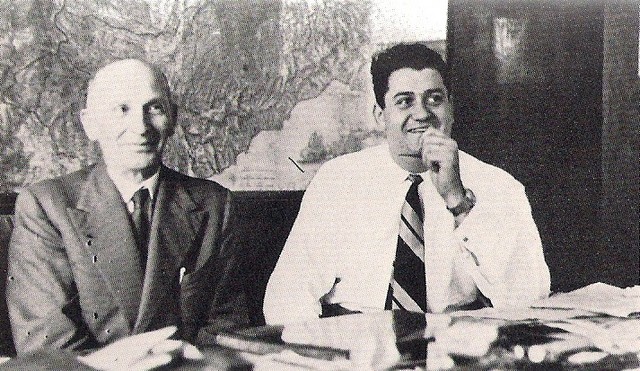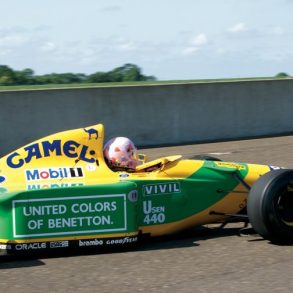Vittorio Jano Biography

Nicola Romeo owned the Italian franchise of the American Ingersoll company, makers of earth-working equipment, pneumatic drills and air compressors. Because of WW I the importation of equipment became a major problem and Ingersoll decided to give Romeo the license to design and manufacture their products in Italy. Romeo took control of the Alfa factory in Milan and produced the equipment there. After the war there was a need for automobiles in Italy and Romeo turned to producing automobiles full-time as Alfa-Romeos. Motor sport was seen as a proper avenue for the promotion of this “new” company and the former Darracq engineer, Giuseppe Morosi, was tasked to design a new race car. 
The introduction of Jano to Alfa Romeo resulted in immediate changes in the engine department. Under Morosi readings would be taken from an engine being tested under full power for no longer than 30 seconds so as not to risk the engine. When Jano saw that he took a hold of the throttle and held it fully open while placing a weight on it. He told the astonished engineers that since it was 5:00 he would go home for a bite to eat expecting a call at eight for an update on how the engine was progressing.
Jano first car, the P2, was based on knowledge he had gained at Fiat and at the first race Antonio Ascari drove the new car to victory. Later the P2 would win at the Grand Prix of Europe at Lyons, this time with Campari driving. The P2 had the first Grand Prix engine to produce more than 4 bhp per square inch of piston area.
With the withdrawal of Fiat, Alfa-Romeo became the leading Italian racing car manufacturer. Jano also designed production touring cars for the Milanese firm. But it was in racing that his talents could reach their full expression. The Alfa-Romeo’s began to dominate racing, too the point where some of the more nationalistic spectators would begin to heckle the Italian team. One incident has become a part of racing lore. During the Belgian Grand Prix at Spa in 1925 the local favorite Delage team had retired all of their cars and the race became an Alfa-Romeo parade led by Ascari and Campari. The fans began to make their displeasure known and Jano in response ordered his cars to pit. While they were being refueled the cars were cleaned and buffed. During this pitstop he had a table placed in full view whereupon he imperiously ate lunch, deaf to the howls of the spectators. The cars rejoined the race and won with ease.
During this time he began to collaborate with Stefano Somazzi in the scientific development of racing fuels. Somazzi worked for Shell Italiana in Genoa. Their collaboration bore fruit when in 1925 they came up with a fuel/alcohol mixture that allowed the engine to run cooler and cured pre-ignition problems. Somazzi would go on to develop the famous Shell Dynamin in 1932.

The P3 Monoposto was the first genuine single-seat racing car. It was powered by an eight-cylinder engine built around two four-cylinder blocks, each fed by its own Roots supercharger. One of the engines major strengths was its low-speed torque. Power to the rear wheels was transmitted through twin driveshafts that allowed for the drivers seat to be placed lower in the chassis. The original leaf spring suspension was replaced in 1935 by an independent Dubonnet front suspension. The complete car weighed in at only 1,625 lbs. and were it not for its cast-iron block engine, it would have weighed considerably less.

In 1937 after the death of Vicenzo Lancia, Jano was induced to join Lancia as chief development engineer. While there he produced the revolutionary D50 race car which incorporated its engine as a stressed member, and the equally revolutionary Aurelia Grand Turismo sports car. 
A year later the competition version of the Aurelia debuted complete with a powerful 2.5 litre version of the engine. The Aurelia B20 GT was the very first Lancia racing car in the 45 year history of the company, a remarkable fact considering the elder Lancia’s early racing endeavors with Fiat. The car proved to be immediately successful with class wins in many major rallies and also at Le Mans. Inspired by the success of the Aurelia, work was started on a completely new racing car that could challenge for overall wins. For this project Jano’s vast experience at Alfa Romeo and Fiat proved to be vital as he designed a state of the art competition special. Dubbed the D20, the new racing cars were ready for the 1953 Mille Miglia. Securing a third place position against strong competition from Ferrari and Alfa Romeo only served to wet the appetite of Gianni Lancia. The D20 was replaced by the D23 now sporting open bodies also by Pinin Farina.

In 1955 Lancia withdrew from racing and the cars and equipment was transferred to Ferrari. Jano, who had known Enzo Ferrari from his earliest Alfa Romeo days joined Ferrari full-time and was instrumental in establishing a firm foundation for Ferrari’s future racing efforts.
Illness was to end his life at the age of 75 not through its own efforts but by the hand of Jano who committed suicide rather than face the prospect of failing powers.











